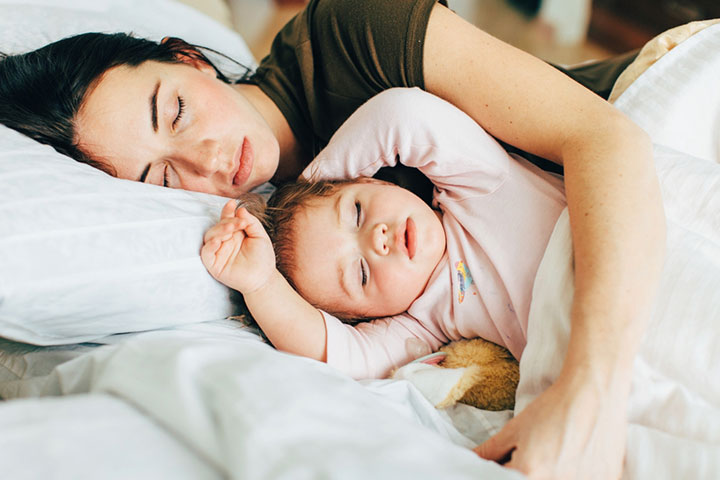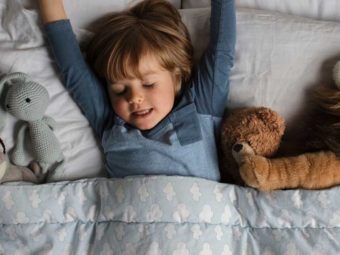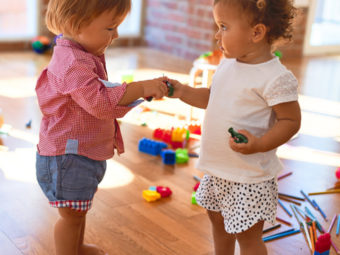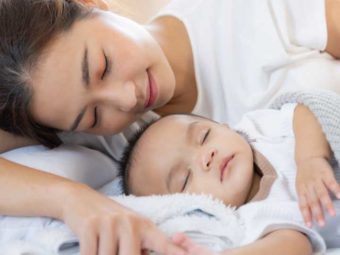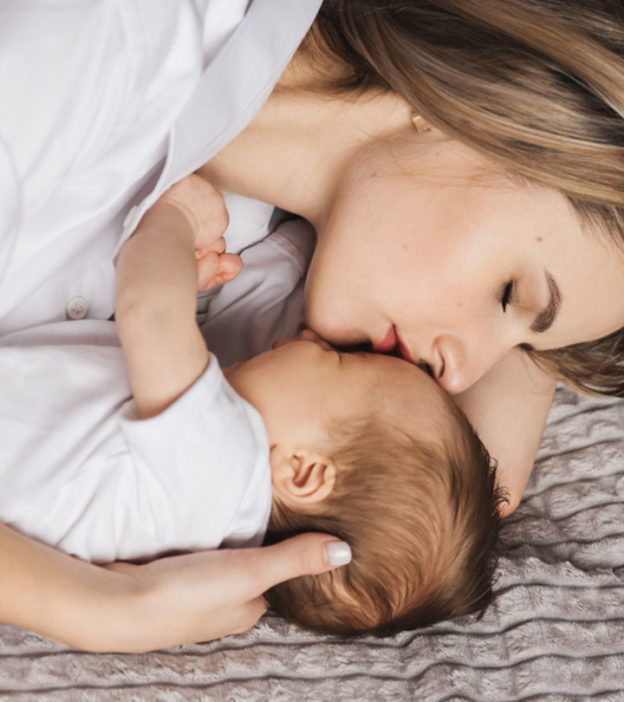
Image: Shutterstock
Safe co-sleeping is the most natural way to get some rest while bonding with your baby. There is a lot of information (and misinformation) around safe co-sleeping, making it difficult for parents to make rational decisions about how to raise their kids. The environment and furnishings we use to raise our children also prompt unique safety concerns. What kind of co-sleeping is best for keeping an infant within your arm’s reach but out of harm’s way? When does a co-sleeping toddler transition to their own bed? Is co-sleeping bad? There’s a lot to sort through with everything that is known about co-sleeping.
To clarify, here are the five big myths that need to be dispelled so the real risks can be calculated —and everyone can finally get a good night’s sleep!
Myth 1: Safe Co-Sleeping Is Impossible
Image: Shutterstock
The older a child gets, the safer co-sleeping becomes. The older your children are, the better are their ability to extricate themselves from suffocation or possible entrapment.
Even for babies, co-sleeping can be facilitated by co-sleeping devices that attach to the side of the bed. These allow breastfeeding mothers easy access to the child while keeping them away from the bedding and big bodies. Other options include “suspended cribs” that keep a kid out of the parent’s way but make them easily accessible.
Some parents have even opted to support co-sleeping by having a single parent in the bed on a firm mattress with a tight bottom sheet and minimal covering. This is a relatively safer sleeping arrangement; however, there is still a risk of entrapment or suffocation in these situations for the youngest babies.
Myth 2: Co-Sleeping Is Perfectly Safe
Image: Shutterstock
Okay, hear us out here. Co-sleeping parents often practice attachment parenting by keeping kids close so their needs can be attended to promptly. They often espouse the opinion that co-sleeping is a perfectly safe and natural way for parents to raise their children. The problem is that having a child in a standard bed with two parents can be incredibly risky, particularly for babies younger than 3 months. Babies sleeping between parents are at risk for suffocation and entrapment deaths.
There are ways to mitigate these risks. They include minimizing bulky bedding, never placing the baby between parents, and never going to bed with a baby while intoxicated. The risk will never be reduced to zero, and the practice is still not recommended by many experts.
Myth 3: Co-Sleeping Kids Have A Harder Time Transitioning To Sleeping Alone
Image: Shutterstock
Whether moving a kid from a crib or co-sleeping arrangement to a big kid bed of their own, there will be a period of adjustment. One transition is not necessarily more difficult than another. And like most things in parenting, how they take to sleeping mainly alone depends on the kid’s temperament.
It should be noted that getting a kid to sleep alone, whether they are babies or preschoolers, will be a challenge, but the transition from co-sleeping is best accomplished by the “fading” method. This method requires a parent to be close and quiet as a child falls asleep in their own bed. Slowly, the parent puts more distance between themselves and the child (essentially fading back into their own room).
Myth 4: There Are No Benefits To Safe Co-Sleeping With Toddlers
Image: Shutterstock
Research shows that a baby’s health can improve when they sleep close to their parents. In fact, babies that sleep with their parents have more regular heartbeats and breathing. They even sleep more soundly. And being close to parents is even shown to reduce the risk of SIDS(1). That’s why it is recommended that children sleep in the same room with their parents.
其他好处包括更好的quality of life for breastfeeding mothers who can easily feed their children. A baby that sleeps more soundly will have fewer wake-ups, meaning parents are more likely to get their own rest.
Myth 5: Co-sleeping Parents Can Never Have Intimate Moments
Image: Shutterstock
Will parents ever be able to have some “us” time in the privacy of their own bed? Unlikely. There are 24 hours in the day, and most of them are ideal for private time if parents can manage to find time alone together. Co-sleeping should not be ruining anyone’s marriage. There were probably some more profound problems, to begin with, if it is.
So now that you know how co-sleeping is beneficial to your baby, you won’t have to make multiple trips to the nursery just to ensure your baby is doing fine. It is hard for the baby, but it is also hard for the parents who will jump out of bed with the first cry of their baby. So, do you have any expert advice about co-sleeping with your child? Let us know in the comments section!



